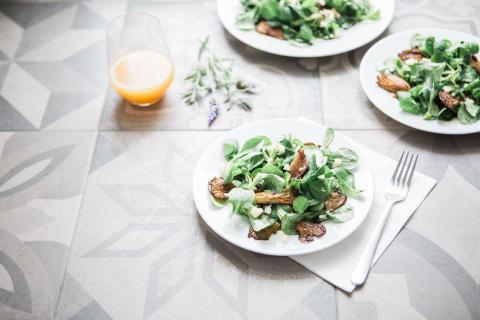
When we’re growing up, we always hear that we should eat our vegetables. Our parents drilled this habit into us, and now that we’re grown up, the choice is ours—do we still eat them? If so, why do we eat them, and which ones do we focus on?
Vegetables are part of any healthy diet, but what makes them so special? Well, many vegetable varieties have low fat and very few calories. None of them have cholesterol either. They often contain various vitamins and minerals as well. Any given vegetable can provide your body with things like potassium, vitamin A, vitamin C, and even fiber.
In short, vegetables offer a huge amount of nutrition that varies across each type. During the spring season, there are five vegetables everyone should stock up on for the nutrients they offer.
Stay Healthy with These 5 Spring Vegetables
1. Artichoke
Artichokes are a species of thistle. They are eaten before they bloom, at which point they are tough and no longer edible. Once the top portion of the plant is removed, artichokes are often boiled or steamed. Many people eat the leaves one at a time in dishes.
The heart of an artichoke is also used in a variety of dishes. For example, in Italy, artichoke hearts in oil are used on the spring section of a “four seasons” pizza.
Here are some of the healthy things you can find in artichokes:
- Fiber
- Potassium
- Calcium
- Iron
- Phosphorus
Artichokes promote a healthy liver. They also combat gout, migraines, and even digestion. With so many benefits, it pays to find ways to incorporate artichokes into your diet in the spring.
2. Asparagus
The asparagus plant is eaten when it’s young, before the buds begin to open. Water actually makes up 93% of this vegetable’s composition, but it’s low in calories and sodium. Many places around the world serve asparagus as a side dish or appetizer.
It can be baked, grilled, or mixed into stews and soups. In recent years, it has even been eaten raw in salads. Pairing it with meats like fish, steak, or chicken can also be a great way to add nutrition to a meal.
Check out all the healthy things asparagus offers:
- Vitamin B6
- Calcium
- Magnesium
- Zinc
- Vitamins C, E, and K
- Iron
- Phosphorus
- Potassium
- Asparagus is a delicious vegetable to add to any dish or salad, and your body will thank you with all of the health benefits it offers.
3. Watercress
A long time ago, watercress was used as a medicine. People would consume it to treat coughs, colds, asthma, stress, constipation, indigestion, and much more. At one point, it was even used as a deodorant!
Today we know that watercress contains a flavonoid called quercetin that can reduce inflammation and act as a natural antihistamine.
Here are some of the other nutrients watercress offers:
- Beta-carotene
- Iodine
- Iron
- Calcium
- Magnesium
- Zinc
Watercress is incorporated into a variety of dishes as a vegetable that can pair with other vegetables in a stir-fry or salad.
4. Mustard Greens
Mustard greens are in season until the end of April. They can be used in salads or as a side dish. They offer your body nutrients to fight free radicals and protect against cell damage. They also empower your body to fight against cardiovascular disease.
Here are some of the nutrients you’ll find in mustard greens:
- Beta-carotene
- Vitamin B6
- Folic acid
- Magnesium
- Calcium
The calcium in mustard greens can also help alleviate some of the symptoms associated with menopause, including hot flashes and sleep problems.
5. Vidalia Onions
Many other types of onions are available throughout the year, but sweet Vidalia onions are around for the spring season only. They are an excellent way to add flavor to salads, dressings, or egg-based recipes.
And they have health benefits, too. They contain over 100 sulfur-based compounds which can help to alleviate the symptoms of asthma and other respiratory diseases. For every cup of Vidalia onions, you also get a strong amount of flavonoids that have been known to protect against cancer.
Check out these nutritional facts about Vidalia onions:
- Low in sodium
- Potassium
- Dietary fiber
- Vitamin C
These spring vegetables are great sources of nutrition for you and provide great flavor to your recipes. Try incorporating these ingredients to your springtime meals for a healthy boost!
Which spring vegetables do you like to eat? Let us know in the comments!








